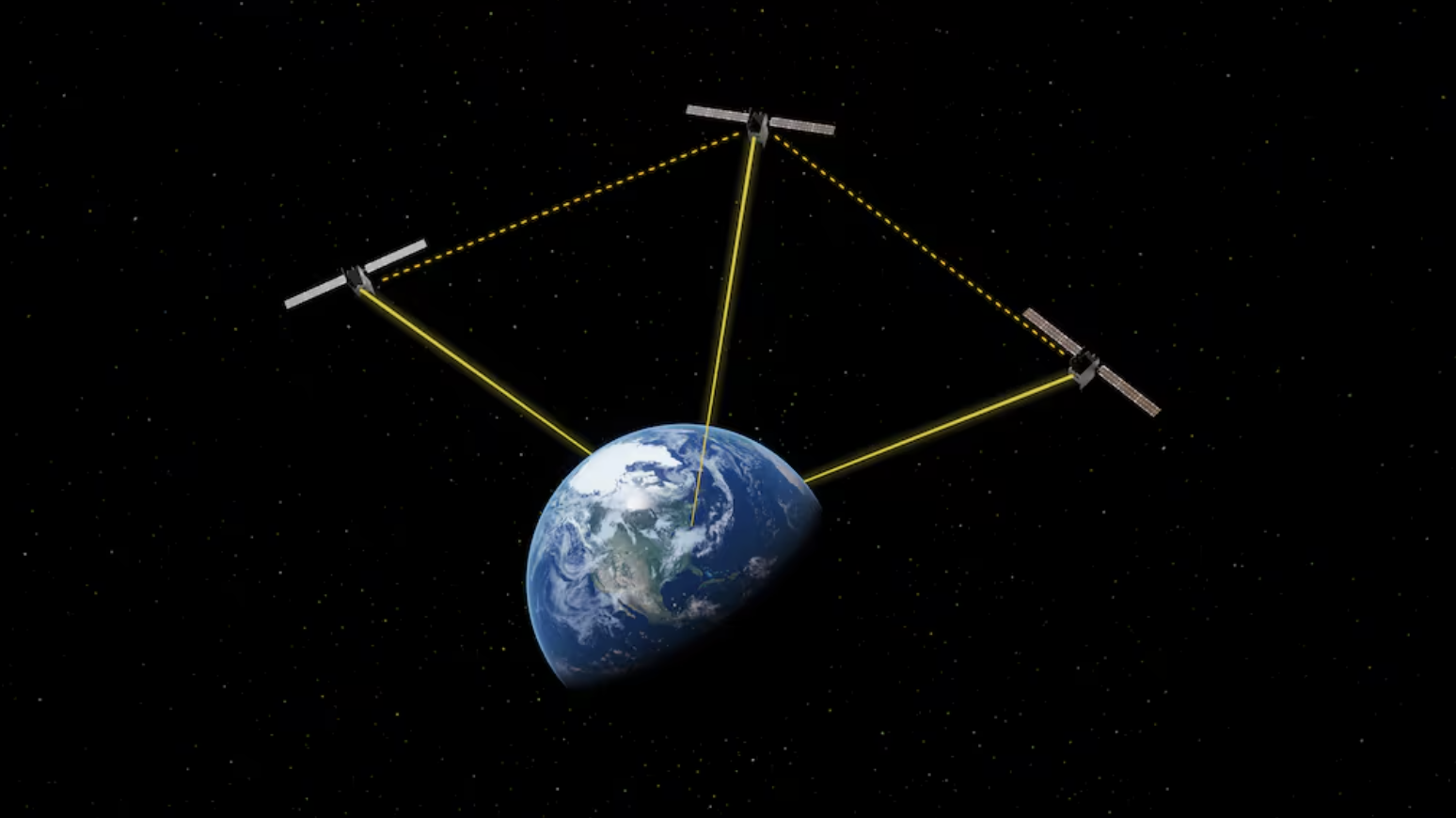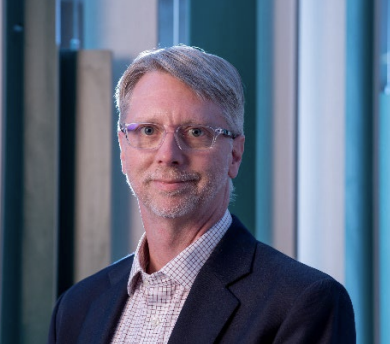TQI Exclusive: Boeing’s Jay Lowell on Pushing The Boundaries of Quantum Networking And Expanding The Reach of Satellite Technology

Insider Brief
- Jay Lowell discusses Boeing plans to launch the Q4S satellite in 2026 and how testing quantum entanglement swapping in space as a crucial step toward building a global quantum network.
- Boeing’s team, in collaboration with HRL Laboratories, will explore how quantum networks can function over long distances, moving quantum technology beyond the lab and into real-world applications.
- Lowell believes this mission is a step toward revolutionizing — and commercializing — quantum communication and timing synchronization, unlocking secure data transmission, national security applications and improved scientific collaborations.
- Image: Artistic representation of Boeing’s 2026 quantum network demonstration, Q4S. (Boeing)
Boeing recently unveiled plans to launch a satellite in 2026, named Q4S, aimed at demonstrating quantum entanglement swapping capabilities in orbit. The mission, funded entirely by Boeing, is a step toward a secure global quantum internet, potentially linking quantum sensors and computers across the globe, according to Jay Lowell, chief engineer of Boeing’s Disruptive Computing, Networks and Sensors.
The Q4S mission to test quantum networking in space could give researchers an opportunity to better understand how these networks can operate over long distances while maintaining synchronization.
Ultimately, the project seeks to push the boundaries of what’s possible in quantum information transfer by testing entanglement swapping in a non-laboratory environment, according to Lowell, who added that the decision to pursue this mission was based on maximum impact, said Lowell, an internationally recognized expert in systems engineering of quantum, electromagnetic and electro-optic systems.
“When we looked at what we thought would have the biggest impact, we started by asking what the end state needs to be for a quantum network,” Lowell said in a recent interview. “One of the key things we identified was the need to show that the communication protocol used to move quantum information around the network has to work outside of a controlled lab setting.”

Toward A Global Quantum Network
Generally speaking, in a quantum network in space, nodes are satellites or space-based quantum devices that generate, process, or store quantum information and the links of the network consist of communication channels, such as laser beams or satellite-based optical systems, that can transmit entangled photons between these space-based nodes, as well as with the ground stations on Earth.
Lowell and his team recognized that quantum networks hold immense promise. For example, these systems allow for quantum key distribution (QKD), providing advanced encryption that protects data from interception by even quantum computers. These super-secure networks would provide national defense advantages, as well as protect the exchange of sensitive data, like financial information, for consumers. Quantum networks could also support faster scientific collaboration and provide a platform for advancing quantum research in unique low-gravity environments.
In a somewhat typical technological Catch 22, the ultimate promise of quantum networks may not be realized until scientists actually create the network.
And that won’t be easy, said Lowell.
Entanglement — which is an extremely delicate correlation between particles regardless of distance — is difficult enough to manage on earth, let alone in space. The ability to reliably transmit these quantum states over long distances will takes the science a leap beyond what is currently possible. By testing entanglement swapping in the harsh conditions of space, Boeing hopes to take the initial steps necessary for a future global quantum network.
Part of this mission is also to show that Boeing can take these innovations beyond the laboratory, according to Lowell, who has a technical background that uniquely matches the outline of this mission, including work in remote sensing, precision measurements of time and frequency, inertial measurements, laser/matter interactions, photonics, optical signal processing and software development.
“You can’t have a quantum network if you can’t move quantum information around, and if you’re only doing it in a laboratory, that’s really not that useful,” Lowell said. “We need to show that we can move it in an environment where we’ll need to have network nodes in space to enable long-distance networks.”
The upcoming satellite mission, which will be launched into a sun-synchronous orbit, will feature a complex payload designed to precisely control the spatial and temporal overlap of entangled photons. In other words, the satellite must be able to accurately manage the position and timing of entangled photons, so that they meet at the correct location and moment. This precision is critical for the entanglement swapping protocol, which allows quantum states to be transferred between distant nodes without the photons having to interact directly.
“The two photons that interact need to overlap temporally to better than a few hundred femtoseconds, and their angle needs to be specified better than twelve thousandths of a degree, all while controlling for temperature changes and gradients,” Lowell said. “This is an order of magnitude harder than doing the experiment in a lab.”
Just to give some idea on how precise this is, a few hundred femtoseconds is about a millionth of a billionth of a second. In 300 femtoseconds, light can travel roughly 90 micrometers, which is less than the width of a human hair.
One Team Approach
The project is a collaborative effort between Boeing and HRL Laboratories, with the latter providing expertise in quantum demonstrations. HRL Laboratories is a California-based research company jointly owned by Boeing and GM, specializing in advanced technologies for the automotive, aerospace, and defense sectors.
According to Lowell, the team has adopted a “one team” approach, ensuring that everyone is involved in every aspect of the program.
“This is a one team effort,” Lowell said. “Everybody is involved in every aspect of the program. Our integration meetings go multiple hours, and everybody walks through all their issues, and everybody is listening, understanding and offering solutions to the problems that we’re seeing in every aspect of this so that we can get past those problems and successfully demonstrate what we want to do.”
Beyond the technical challenges, Lowell and his team are also using this mission as a way to answer the question of why this project is important and what it could lead to in the future. According to Lowell, the potential applications of a generalized quantum network are vast and largely unexplored.
“It’s the novel capability that is what really brings quantum to the forefront,” Lowell said. “There are two examples that I think illuminate this well: novel security capabilities, such as quantum position verification, and the potential for orders-of-magnitude improvements in timing synchronization that could enable a wide range of applications.”
As the team pushes forward with their satellite experiment, Lowell is confident that the path forward will become clearer once they’ve accomplished what hasn’t been done before.
“Until you’ve done what hasn’t been done, you really don’t truly understand what you’re going to be able to do with it,” Lowell said. “But once you’ve done that, the path forward starts to become illuminated, and you can see the way to the end, or at least a lot further down that path than you could before.”
Boeing’s DC&N leverages core technologies in quantum communications, computing and sensing, high performance computing and advanced networking to develop computing and communications solutions for advanced commercial and government aerospace applications.
